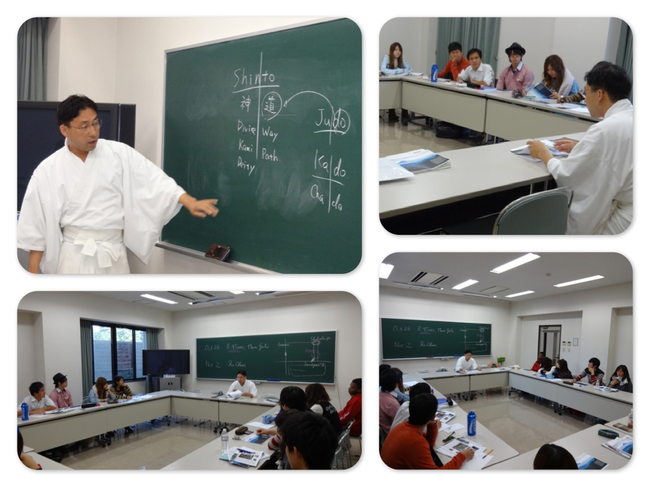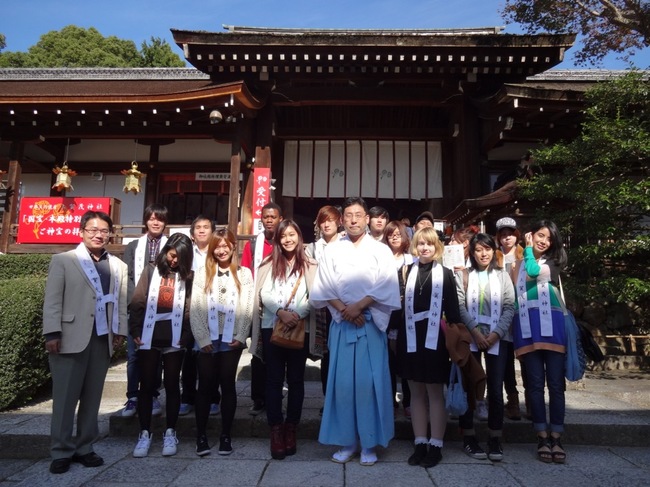Introduction to Japanese Religion (The Institute for the Liberal Arts)
INSTRUCTOR: Katsuhiro KOHARA (小原克博)
OFFICE: Taishin-kan 2F, TELEPHONE: 075-251-3343
EMAIL: kkohara@mail.doshisha.ac.jp, HP: https://www.kohara.ac
Course Description
This course is designed to introduce students to the history, teachings and practice of Japanese religions. It requires no prior knowledge of the topic. We shall examine the Japanese religious landscape from a variety of perspectives, paying particular attention to the issue of how multiple traditions have continued to coexist in Japan.
This course will be dealing with representative Japanese religions such as Shinto, Buddhism, Confucianism and folk religions. At the same time we will compare Japanese religions with world religions including Christianity to get a comparative perspective of religion in the world history. It has been often said that the contemporary Japanese society is not religious, rather very secular, but in reality most of the Japanese people take the existence of spirits, ghosts and the afterworld for granted. Japanese popular culture, especially manga and anime, reflects such tendency in the unique way. In order to gain insight into the hidden religiosity, we will be looking at some representative manga and anime from the perspective of religious studies.
Course Objectives
The objective of this class is to get the basic understanding of Japanese religion through its history as well as its fundamental teachings and rituals. By the end of this course, students will also become acquainted with major themes in the study of religion.
Course Requirements and Assignments
1) Attendance and Participation
Assumed are active participation in and contribution to the class. Students are urged to have done the required reading before the class. It will provide the background and framework for lecturers and discussions.
You need to read in advance all pages assigned for each particular week. The amount of reading is limited to an easily manageable number of pages and, with the exception of a documented emergency, no excuse will be accepted for not doing the reading. In every class, each student should be prepared to conduct a discussion on the reading materials or the topics they involve.
A quick reading of the materials is often not sufficient to assimilate their contents. For each of the chapters of the textbook you will need to take at least one full page of notes for yourself. Rather than facts, write down reminders concerning ideas that the text suggests, issues that you do not find clear, or any other elements of reflection that may trigger further elaboration in your own papers or be useful for the class discussions.
2) Presentation and Paper
Students will be required to give a short presentation and write a paper based on the presentation. The details will be announced in the classroom.
Evaluation Criteria & Grading
Grading for the course will be determined as follows:
1. Attendance and Participation 40 %
2. Presentation and Paper 60 %
Additional Information: CLASSROOM POLICIES
1. Punctuality is an essential expression of courtesy and latecomers may be asked to leave the class.
2. Failure to properly quote your sources or any form of plagiarism in writing required papers will immediately result in a zero grade.
Course Materials (REQUIRED RESERVE READINGS)
The following book is required for the course:
Ellwood, Robert. Intoroducing Japanese Religion. Routledge. 2007. ISBN: 0415774268
Important Remarks: Readings assigned for each week will be tested in class. Using this textbook does not mean that we must necessarily agree with everything it contains. Critical reading is essential.
Reference Books:
Davis, Winston Bradley. Japanese Religion and Society: Paradigms of Structure and Change. State University of New York Press. 1992.
Earhart, H. Byron. Japanese Religion: Unity and Diversity. Wadsworth. 2003.
Kasahara, Kazuo ed. A History of Japanese Religion. Kosei Publishing Company. 2002.
Reader, Ian. Religion in Contemporary Japan. University of Hawaii Press. 1991.
Tamura, Yoshiro. Japanese Buddhism: A Cultural History. Kosei Publishing Company. 2001.
Course Schedule:
Week 1 (Sep 28)
Topic: Introduction
Week 2 (Oct 5) JapaneseReligion01.pdf
Topic: Encountering the Japanese Religious World
Assignment: Read Chapter One.
Week 3 (Oct 12) JapaneseReligion02.pdf
Topic: The Past in the Present: Vignettes of Japanese Spiritual Life
Assignment: Read Chapter Two.
Week 4 (Oct 19)
Week 5 (Oct 26)
Week 6 (Nov 2) No Class due to my trip to Zurich
Week 7 (Nov 9) JapaneseReligion03.pdf
Topic: Introduction to Buddhism; Early Times: Pre-Buddhist Japan and How Buddhism Arrived
Assignment: Read the Interlude: Introduction to Buddhism & Chapter Four.
Week 8 (Nov 16)
Topic: Magic Mountains and the Old Court: Heian Buddhism and its Culture
Assignment: Read Chapter Five.
Week 9 (Nov 30)
Topic: Warrior Culture, Simple Faith: The Kamakura Buddhist Reformation
Assignment: Read Chapter Six.
Week 10 (Dec 7)
A field trip to the Nishi Hongawnji Temple
Week 11 (Dec 14) JapaneseReligion04.pdf
Topic: Swords and Satori: Zen and Its Culture
Assignment: Read Chapter Seven.
Week 12 (Dec 21) JapaneseReligion05.pdf
Topic: Christ and Confucius: The West Arrives, and then Japan Turns Inward
Assignment: Read Chapter Eight.
Week 13 (Jan 11) JapaneseReligion06.pdf
Topic: The Rising Sun and the Dark Valley: From the Meiji Restoration until 1945
Assignment: Read Chapter Nine.
Week 14 (Jan 18)
Topic: Synthesis and Review 1
Presentations by the participants
Week 15 (Jan 25)
Topic: Synthesis and Review 2
Presentations by the participants
Note: This syllabus will be subject to changes and/or revisions


